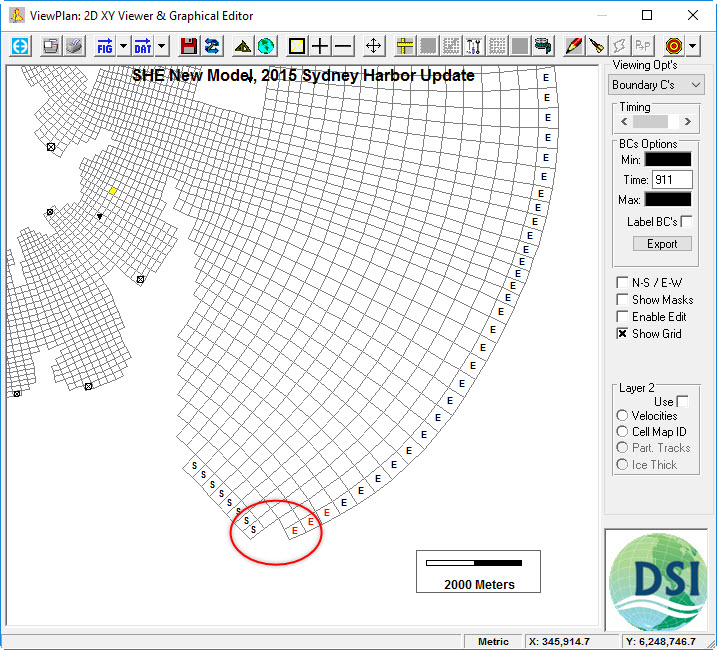The form for the open boundary condition is shown in Open Boundary Condition Editor. In the Current Boundary Group Information frame the user may assign the Open Face Direction and Type of Open BC with drop down menus.
There are three type types of open BC that the user may select from: Elevation Specified, Radiation Separation - Zero Tangential, and Radiation Separation - Free Tangential. Elevation Specified is the standard approach for water surface elevations, using a combination of harmonic constituents and time series. With the Radiation Separation boundary condition the incoming wave at an open boundary is separated from the outgoing wave and the incident wave is assumed to be twice the surface elevation required. By default, the outgoing characteristic is left undefined, allowing waves generated interior to the model domain to pass outward across the boundary with no reflection. When using the Elevation Specified option the user should deactivate one cell in the corner of the grid where two open boundary directions meet. When using a Radiation Separation boundary then the user must have 2 cells deactivated in the corner as shown in Open Boundary Condition Editor. This is because an open boundary always sets a mask in E-W direction for a S boundary, likewise an open boundary sets a mask in N-S direction for a W boundary. Users should also be aware that if they have rapidly changing bathymetry at the open boundary then it is possible to get mass balance errors.
...
| Anchor | ||||
|---|---|---|---|---|
|
Figure 1 Boundary Condition Settings – Flow Open Boundary.
| Anchor | ||||
|---|---|---|---|---|
|
Figure 2 Open Boundary Condition Settings – delete corner cells for Radiation Separation option
The Interpolation frame provides access to two functions:
- Assign generates new pressure series for the unassigned cells interpolated from the cells along the boundary that were assigned prior to pressing Assign. Interpolated series always have an ID that begins with "I:" to identify the series as an interpolated series. Each unassigned cell has its own interpolated series generated, then that series is assigned to that cell. Two or more prior assigned cells to existing series is required. The cells at either end of the open boundary must be defined for this process to work properly.
- Reset scans the current boundary group and finds any cells whose pressure series ID begins with "I:". If it finds cells with an interpolated series, it deletes the series and sets the pressure series index equal to zero (i.e. resets the assignment).
...

